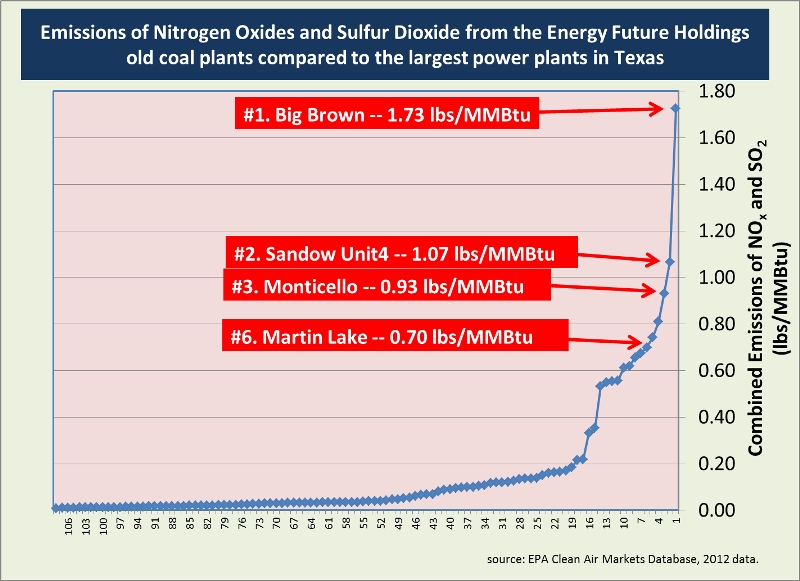This is big news that will literally save lives - in a major clean air and water victory for Dallas-area residents and the nation, today the massive Big Brown Coal plant ceased operations. Big Brown is the nation’s single largest source of the deadly sulfur dioxide pollution that’s linked to asthma, heart attacks, and other severe health problems - not just the biggest coal plant source, but the biggest source, period. For Texas families and downwind communities as far afield as Illinois and Michigan, pollution from the plant is a matter of life and death.
“Any parent with an asthmatic child from Dallas to Denton knows that smog and our dangerous air quality has been a problem for decades,” said Misti O’Quinn, a Beyond Coal organizer with the Sierra Club in Dallas.

L to R: Bionca Arrendando, executive director of Breath is Lyfe, with Misti O'Quinn and Cherelle Blazer of the Sierra Club at a recent Breath Is Lyfe event.
The problem extends far beyond Texas. Big Brown is also one of the nation’s top sources of mercury pollution, a potent neurotoxin that affects babies in utero and can lead to lifelong developmental delays, like lowered IQ. The retirement of Luminant’s Big Brown coal plant will save an estimated 163 lives every year, prevent nearly 6,000 asthma attacks, prevent tens of thousands of lost work and school days, and save $1.6 billion in in annual public health costs, according to analysis conducted with EPA-approved air modeling
This Texas-sized victory could not have happened without the amazing work of tireless activists in the area. Moms and dads, health professionals, faith groups, community groups (like the amazing Breath is Lyfe), environmental organizations, business owners, students, and more have collaborated for years against this major polluter via rallies, public hearings, letter-writing, and lawsuits. Sierra Club and allies and partners were active over the years pushing for reductions in ozone-causing NOx pollution that elevated smog levels in Dallas-Fort Worth, and using lawsuits and regulations to try and cut back emissions of sulfur dioxide pollution that caused both public health problems as well as clouded the skies in iconic national parks like Big Bend in far west Texas.
“Luminant’s phase out of some of its dirtiest coal plants has been a long time coming, and it wouldn’t have been possible without local leadership, legal battles, and community organizing,” said Cherelle Blazer, a long time organizer with the Sierra Club in Dallas.
Luminant announced in late 2017 that it would phase out its Big Brown coal plant along with its Sandow and Monticello power plants. Operations already ceased at the Sandow and Monticello coal plants in January of this year. In 2016, these three Luminant coal plants together emitted a total of 166 million pounds of sulfur dioxide, 24 million pounds of nitrogen oxide, and 21 million tons of carbon dioxide pollution!

These retirements continue a long term trend: Despite President Trump promising the resurgence of coal, since he was elected coal plants have been retiring at about the same rate as during the Obama years, approximately one every 19 days. In fact, more coal plants have retired in the first six weeks of 2018 than in four of the eight Obama years. Moreover, year-to-date coal production at U.S. mines is down around 8% compared to coal mining by this point one year ago. Aging coal plants are increasingly obsolete and uneconomic, both across the nation and locally in Texas.
Clean energy and climate action are leading the way. In Texas, wind energy reached a crucial milestone at the end of 2017 when it surpassed coal to become the second-largest electricity source in Texas. Cities like Austin and San Antonio are drafting climate action plans and expanding community solar programs to increase access to low-cost clean energy.
That progress can’t happen fast enough. Despite clean energy’s rapid growth in Texas and the profound change in how Texas is powered, companies like Luminant, Dynegy, and NRG and communities like San Antonio and Austin are still collectively burning more coal in Texas than in any other state in the country. With the retirement of Big Brown, the biggest air quality threats to Dallas and across East Texas are Luminant’s Martin Lake coal plant and NRG’s Limestone and Parish coal plants. Coal plants and other pollution sources throughout the state have made many of Texas’ major metropolitan areas - including Dallas, El Paso, Houston and San Antonio - rank among the most-polluted communities in the nation, according to the American Lung Association’s “State of the Air” report,
There is work to do, but in the hands of the inspiring community activists like those in Texas and beyond, I am more optimistic than ever. As Misti O’Quinn remarked about this latest move: “Texas still has more dirty coal plants producing more pollution than in any other state. Our work will continue until all Texans in every corner of the state enjoy clean and safe air quality.”